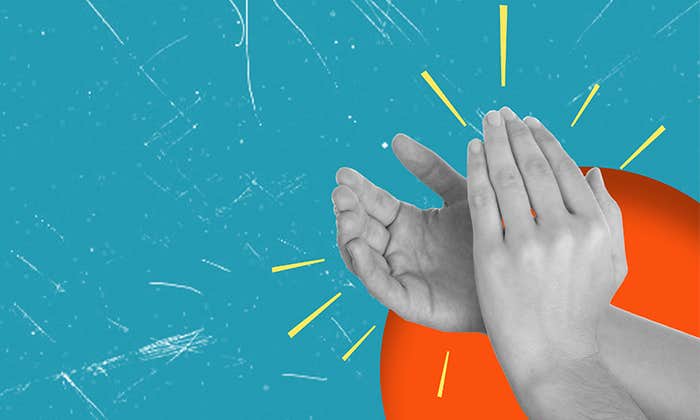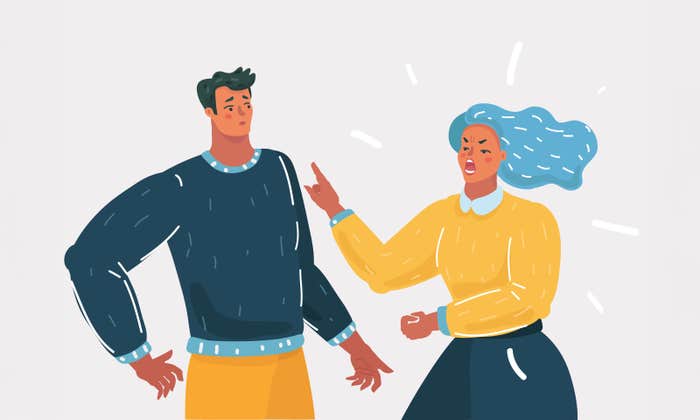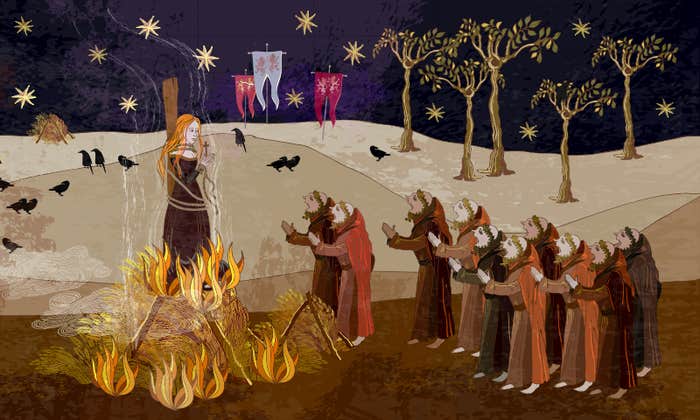It’s pamper time for Maddie, 16, who’s sitting down for a manicure right now, but not before telling her 2,000 Twitter followers. “Spa day,” the teen taps out, her long blond hair clipped up in a sloppy bun as she streams updates throughout the day. “I love when my nails are freshly painted,” she alerts soon after, presumably when the polish is dry. (Color: charcoal grey.)
The bubbly varsity team swimmer is a mini-celeb in her circle, with 1,200 Facebook friends and arguably more Twitter followers than anyone at her diverse suburban high school of 2,000 just west of Boston. And complete strangers around the world see her tweets, too, signing on to her feed after heartthrob Niall Horan, of the boy band One Direction, began following her. Yes, He of the spike-gelled mop-top.
“He has 13 million followers and only follows a couple thousand,” says Maddie, who doesn’t at all mind telling the story of how that happened (more on that later). “People are like, ‘that’s crazy.’” In another tweet, Maddie wonders why Miley Cyrus, her one-time role model and the ex-star of Disney’s Hannah Montana sitcom, has gone punked out and potty-mouthed. “Miley, baby, what happened?” That information may seem like a trashy tabloid tidbit, but the theory about what’s ailing today’s youth centers on the popular TV show. Call it the Hannah Montana Hypothesis.
Researchers are warning that today’s youth are more obsessed with becoming famous than ever before, and rank fame as the most important thing in life. These psychologists believe that narcissism has been increasing from one generation to the next, with today’s youth reaching a new level of vanity and idle dreams of grandeur. With 24/7 retweeting, liking, and following, every teen has a potential world audience to act out fantasies of becoming just like the stars they idolize. Or stars might even follow them.
Maddie seems like a poster child for the social media-induced narcissism era as she broadcasts all day long about her hair, skin, school, friends, swimming, and fave celebs. The caption under her Instagram “selfie” photo, taken by pointing her iPhone down her legs in mid-pedicure, seems to say it all: “The Princess Life.” “I post for the likes,” she explains. “I post all the time.” But her generation’s princess—and prince—problem may be far more controversial than it seems.
On a quick look, the scientific evidence is clear. “Popular TV shows teach children fame is the most important value,” stated the University of California, Los Angeles (UCLA) press announcement of the study by psychology professor Patricia Greenfield and her Ph.D. student, Yalda Uhls. Titled “The Rise of Fame: An Historical Content Analysis,” the study evaluated the two most popular tween TV shows of every decade for the last 50 years. Recruited online, 60 reviewers rated the programs based on 16 moral values incorporating traits from cutting-edge research investigating what makes people desire fame. They ranked community feeling and benevolence as the most important moral concepts in Andy Griffith and The Lucy Show, which aired in 1967; Laverne & Shirley and Happy Days, which aired in 1977; Growing Pains and Alf, which aired in 1987; and Sabrina the Teenage Witch and Boy Meets World, which aired in 1997. In those decades, fame and achievement hovered at the bottom of the list. But in 2007, the moral values flipped—fame and achievement skyrocketed in American Idol (the talent competition) and Hannah Montana, in which high school student Miley Stewart (played by Miley Cyrus) leads a double life as a pop star. At the same time, community feeling and benevolence plummeted.
“The rise of fame in preteen television may be one influence in the documented rise of narcissism in our culture,” Greenfield said in that press release, echoing the battle cry of a much-quoted group of psychologists claiming that today’s youth are more selfish, vain, and conceited than past generations. “At an age when children are craving popularity, they’re craving fame, but without understanding it should be tied to hard work or skill,” says Uhls, a former film executive and a regional director of Common Sense Media, a non-profit advocacy group promoting educational programming and policy for kids. The results? Deflation. Disappointment. Slacking off. “Some kids could drop out of school because they see it as so easy,” Uhls said in a follow-up telephone interview. National media including USA Today, CNN, and Time covered the study with little skepticism, pinning the blame on multimedia for saturating tweens with fame-hyping messages.
Researchers are warning that today’s young are more obsessed with becoming famous than ever before, and rank fame as the most important thing in life.
But it’s not so clear cut. It turns out that neither the researchers nor their reviewers actually watched the programs in their study. Instead, the 60 participants evaluated summaries of the shows written by anonymous contributors to tv.com. That methodology is just one of many deep flaws in the research, according to Klaus Krippendorff, communications professor at the Annenberg School for Communication at the University of Pennsylvania, who wrote the textbook, Content Analysis, now in its third edition.
“I wouldn’t touch these conclusions with a ten foot pole,” Krippendorff said. A sampling size of just two TV programs every decade is “ridiculously small,” if not completely arbitrary, he pointed out, emphasizing the importance of representative samplings. “I would not generalize from this data to say there is a trend over time.”
A content analysis, he explained, must evaluate content. Like film, television involves visuals, sound, and tone, such as jokes or sarcasm that communicate implicit versus explicit meanings. In traditional methods, a small group of raters is trained, then tested on reliability and consistency in analyzing content—a labor-intensive process. So at best, Krippendorff concluded, this study could be seen as a survey of perceptions of past and current TV shows.
Uhls and Greenfield responded to the criticism by explaining that using untrained reviewers was, in fact, their research innovation. “The goal was not ‘accurate coding,’ but learning what impression each series was making on its audience,” they wrote in an email. “In sum, the point was not to assess ‘actual’ content, but ‘perceived’ content.” Yet their paper, sub-titled “A Content Analysis,” only mentions audience perception in passing and repeatedly expounds on TV show values, as do the study’s abstract and implications sections, the UCLA press release, and their comments to reporters.
“I wouldn’t touch these conclusions with a ten foot pole,” Krippendorff said.
If anything, the findings reveal what grown-ups think of children’s TV, since the average rater was 39 years old, with only seven participants under 25. Adult disapproval, in fact, is why Uhls began her research—after noticing that when her daughter was 9 years old, her favorite shows seemed to involve an unusual number of fame-focused settings, ranging from Hannah Montana to Nickolodeon’s iCarly (2007-2012) which was about a fictional teenage web mogul. In fact, the digital revolution is producing actual teen web moguls, like Summly founder Nick D’Aloisio, who was profiled in Forbes magazine after his company merged with Yahoo!. Then there is cloud-computing whizz kid Daniil Kulchenko, who sold his first start-up at age 15 to cloud-computing company ActiveState for an undisclosed sum. But that doesn’t seem to have entered into their equation.
When researchers like Krippendorff tackle content analysis, they typically use trained raters. But that would involve many hours of actual TV watching—and substantial resources. Luckily, Maddie has already logged many hours of actual TV watching and is available—when not working part-time at University Pizza.
“I LOVE Hannah Montana,” Maddie says, excited by the idea of giving her own content analysis. She even singled out the tone, technically known as the implicit message. “It’s lighthearted and funny and some people say the acting is really bad, but I think it’s goofy and stupid in a funny way,” she said. One of the funniest, goofiest things is that rock star Billy Ray Cyrus plays the fictional dad of Miley Stewart (Miley Cyrus) in Hannah Montana—and he’s also her dad in real life. “You laugh at, like, that he’s trying to act and stuff,” Maddie explained. “But actually, he really can’t act very well!” To young people, the interplay between the real and fictional set-up is hilarious.
The show, she explained, doesn’t promote fame at all—but the opposite. “It related Hannah Montana the celebrity to being a real teenager,” Maddie continued, citing the movie version when Hannah Montana finally reveals her identity as a secret star who’s really just a normal teenager. Maddie says the message brings down to earth the celebrities that she already adores and sees promoted everywhere, especially in magazines. “The show was really based on friendship—keeping your friends and family really close,” Maddie says. “When you watch it, you appreciate your family and friends even more.”
Fears about the cult of celebrity run amok aren’t new. Historian and social critic Christopher Lasch wrote about it in his 1979 bestseller, The Culture of Narcissism: American Life in An Age of Diminishing Expectations. Back then, a new global media— TV—was being blamed for spreading fast fame in days when only three major TV networks existed. Today with our access to thousands of TV channels, millions of YouTube videos, and 1.73 billion social media users, the debate is more heated than ever: Does easier access to fame spread narcissism like germs—especially to the young—or simply enable pre-existing narcissists to draw more attention?
A few years ago, S. Mark Young, a communications and business professor at the University of Southern California, Los Angeles, and Drew Pinsky, doctor and TV personality, teamed up to tackle the question. They used the Narcissistic Personality Inventory (NPI)—a 40-point questionnaire developed by two University of California, Berkeley professors to assess traits attributed to narcissism such as exhibitionism, exploitativeness, superiority, and vanity—to measure 200 celebrities from Pinsky’s radio show, LoveLine. Reality TV stars scored highest, followed by comedians, actors, and musicians, in that order—all clocking in higher than the average person.
Young and Pinsky found that the length of years in the limelight did not correlate with score. They theorized that being famous does not cause narcissism, but rather attracts it. (Otherwise, the longer a person spent in the limelight, the higher she’d score.) Reality TV, they concluded, lets people with “limited abilities believe that they can succeed in the entertainment industry.” The study’s point is not that individuals with narrow thespian skills like Kim Kardashian and Honey Boo Boo do succeed, but rather that selfish, self-aggrandizing, vain people, aka narcissists, are over-represented on TV and social media —because they love drama, perform well in public, and obsessively groom their image.
“The rise of fame in preteen television may be one influence in the documented rise of narcissism in our culture,” Greenfield says.
Such personalities have been dubbed “super-spreaders” and are said to transmit narcissism like a virus. That is the theory of the academic camp led by Jean Twenge, psychology professor at San Diego State University and co-author of Generation Me: Why Today’s Young Americans Are More Confident, Assertive, Entitled—and More Miserable Than Ever Before and The Narcissism Epidemic: Living in the Age of Entitlement.
Twenge and co-author Keith Campbell compare celebrities to Typhoid Marys who infect the masses with the sickness of vainglory just like the notorious 1900s cook. But they don’t detail how celebs poison others with narcissism, except through a generalized copycat principle—see it, wannabe it—a theory Lasch also supported.
On the contrary, they theorize that today’s youth are the most infected of all age groups with mimetic dreams of tinsel laurels because they’re malleable “like clay.” As evidence, Twenge and Campbell point to a rise in college students’ NPI scores in the last 20 years—although Twenge concedes that no good longitudinal research on adult NPI scores exists as a comparison. To draw conclusions over time, a comparison control group is required, but none exists. Thousands of college students take the NPI in basic psychology courses, but no adults do. Yet, Twenge believes her team overcame that obstacle. “We were able to find enough data to say the pieces of the puzzle come together,” she says. And with the puzzle supposedly assembled, Twenge and her camp seem to have gained the cultural upper hand on the popular view that today’s youth are spoiled trophy-grabbers, with celebrity culture, social media, lax parenting, and the self-esteem movement to blame.
But a counter movement of psychology researchers is on the march—at least in academic journals. Spearheaded by Kali Trzesniewski at the University of California, Davis and M. Brent Donnellan at Michigan State University, the skeptics have responded with a flurry of detailed critiques of Twenge and company’s data, calculations, conclusions, and the NPI index itself. First, they argue that the uptick in college NPI scores comes down to one to two points out of 40, barely reaching statistical significance. “I don’t question that norms of behavior have changed,” says Trzesniewski. “But when you get to core [personality] traits, there just doesn’t seem to be a difference.”
“Ridicule of the young is in many ways the last respectable prejudice,” Arnett says.
The second problem is the NPI’s questionnaire, the skeptics say. Question 33, for example, offers the choice between “I would prefer to be a leader” and “It makes little difference to me whether I am a leader or not.” Question 8 offers the options “I will be a success” or “I am not too concerned about success.” In both cases, choosing the first option raises the NPI score one point. “The NPI is an odd and very American set of items,” Wellesley College psychology professor Jonathan Cheek, who studies the intellectual history of narcissism, wrote in an email. “Twenge used a bad scale—was misled in a way, but avoided looking for subtleties and complexities in this complex psychological construct.”
Looking to the real world for evidence, the skeptics cite falling rates of youth alcoholism, crime, car accidents, pregnancy, and childbirth to argue that today’s generation is not more risk-taking, impulsive, or aggressive—all narcissism hallmarks—but less. “This is not merely an academic argument,” says Jeffrey Jensen Arnett, psychology professor at Clark University who coined the term “emerging adulthood” for today’s unsettled 20-somethings. “These stereotypes are destructive to young people,” he says. “Ridicule of the young is in many ways the last respectable prejudice.”
Add ridicule of Hannah Montana to the list. Briefed on the controversy over her generation, Maddie scoffed at the notion that adoring the Disney sitcom and a celebrity Twitter follower make her narcissistic. While it might seem biased to ask her to evaluate herself, the NPI scores are self-rated. So here’s hers: “I don’t mind not being famous. I wouldn’t want to give up my sense of privacy,” says Maddie, the daughter of a graduate school administrative assistant/tap dance instructor and wine and spirit sales director. “Celebrities get expensive things and expensive tastes and they’re not as appreciative of the things they have.”
Then she tells how much she appreciates her parents and friends, just like her Instagram tribute to her best buddy since 6th grade, Hayley: “I am so lucky to be able to go to you with anything. You’re the sweetest person ever and so pretty! You’re also weird, but that’s alright, but happy sixteenth.”
But what about her self-absorbed Twitter feed? “I’m a high school kid,” she responds. “I tweet about things teenagers think about, like our feelings—and food.” High school stress. Books, too. And teen crushes. That brings us to one early morning at 5:30, when Maddie and three BFFs ventured to the mall to meet members of One Direction, only to find about a hundred girls with sleeping bags already in line. Somehow, Maddie managed to pass a card to the band’s manager for Niall confessing her devotion and asking the 19-year-old Irish singer to follow her on Twitter. Months later, he did.
Despite her brush with fame, Maddie likes sciences and ponders a future in photography, not showbiz. She is also developing her own theories about how social media affects people, and she worries about it, too. “I know little kids who have Instagrams and Twitter and stuff, and they’re like 8 years old,” she says of the girls she babysits. “The generation below us—all the technology is making them grow up quicker. Some parents have no idea. That’s the scary part.”
Jessica Seigel is an award-winning journalist, New York University adjunct journalism professor, and former Chicago Tribune national correspondent. Featured on Good Morning America, Fox TV, and The O’Reilly Factor, her work has appeared in The New York Times, National Public Radio, Salon, and other publications. @Jessicaseagull


























